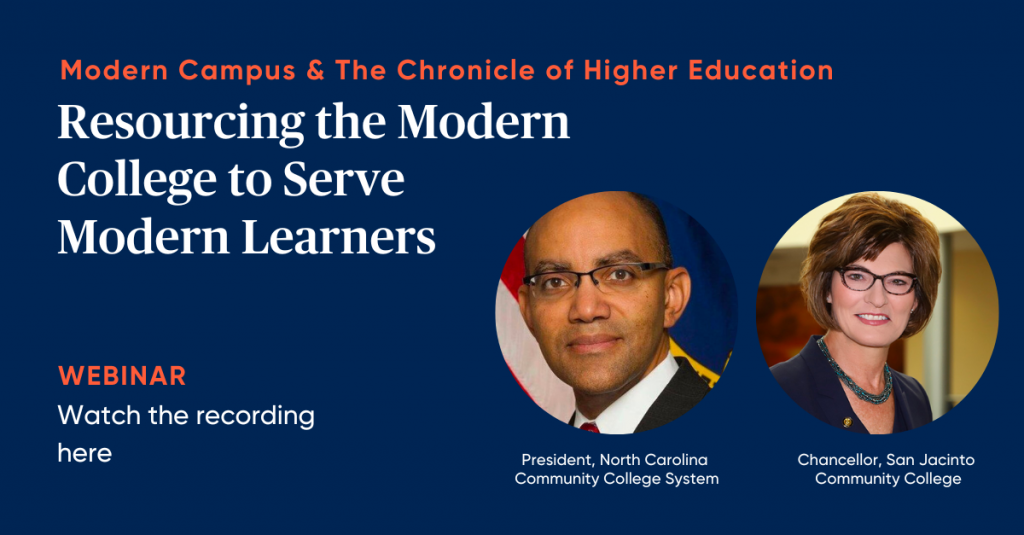Published on
Thriving or Falling: The Programs Least Impacted by COVID-19
Some programs, such as Workforce Development courses, stayed strong during the COVID-19 pandemic, while others saw significant reductions in enrollments. The key to retention could be engaging with students as early as their junior year of high school.
The EvoLLLution: What do you feel are some of the key drivers behind this national decline in learner numbers?
Brenda Hellyer: Let me give you an overview of Texas and San Jacinto College, which is a community college in the Houston Gulf Coast region. We have one bachelor’s program in nursing, but our main focus is on workforce training and academic transfer. In Texas, there are 50 community colleges, and we were experiencing growth before COVID-19, with most of it occurring in our urban areas. It was our rural areas that were suffering enrollment declines. We’ve seen the population declines with our census data, so we know those rural areas had already been struggling. Through COVID, Texas community colleges lost approximately 12% of their enrollment. Our university partners stayed pretty flat, with maybe a slight increase, and a portion of that was coming from their graduate work. But with community colleges, the decline was largely across the board.
We have also seen the high school graduates, those May 2020 graduates, who didn’t go anywhere in higher education were the largest part of the decline for fall 2020. At my institution, we saw increases in high school students taking dual credit during that time also, but we’re seeing those enrollments come back down now. For our continuing ed students, generally working students, we saw declines in enrollment, meaning they didn’t return. And we saw large declines in our Latinx and Black males.
We actually saw overall enrollment increase through the first part of COVID, but I really attribute that to the significant federal funding we received and were able to roll out to students. We offered programs to get students back to class and funded a Retake Program that allowed students who failed a class through COVID to take it again for free. We also helped struggling students supplement living and technology costs, so they still had resources for higher education.
This summer, we’re seeing a slight decline in enrollment and largely in our academic courses. Technical courses and workforce programs have continued to do well. For fall, we’re doing great right now, but the concern is if it will hold.
Part of the enrollment decline trend we are experiencing in community colleges and higher education reflects what we are hearing across the nation. For example, we hear questions like: What is the value of higher education? Is it worth students coming? What’s going to happen to the economy? What kinds of earnings are students going to receive after earning their credential? I also think there is a lack of understanding of the value of workforce credentials. Many people do not know what a one-year certificate is. How do we help our communities understand the value of those one-year or two-year certificates?
Another issue is that lack of connection with our high schools. I don’t know how the rest of the country does it, but at San Jacinto College, we were really hands-on, getting into our high schools and making sure we had counselors meeting with parents and students. This connection started in junior year and continued through senior year, but we lost all that through COVID. It has been a challenge to reconnect and be present at high school, talking with students, parents and counselors. The community college application process gets pretty active in June and July, and that’s late for a student to be thinking of where to attend school. But last year during COVID, applications were even later than normal, in addition to going down. Right now, those numbers are up again. I think our challenges are the perception of higher education and the value of credentials, but there’s also a struggle to really connect with future students and community.
While Texas has experienced growth in enrollment over the years, our growth has really come from our dual credit enrollment—students who are still in high school students. In 2010, we were at about 10,000 dual credit enrollment students. Last year, that was more than 200,000, which changes the dynamics of our enrollment. Many of us are giving discounted tuition to encourage those dual credit students to enroll with us. They take some hours with us. They may earn their associate degree while they’re in high school. But, if they’re not earning it, they’re transferring to a partner university rather than staying with us to complete it. Hopefully, we have helped them see what they can accomplish in higher education. Getting those college hours early is important, but the community college business model has changed in Texas due to the increase in dual credit students, which has also reduced our first-time college enrollment numbers following high school. But even more of an issue is that we keep missing a whole portion of the population—those students who don’t attend at all. How do we connect with students who don’t see the possibilities of higher education for themselves? That’s a real concern for me.
This interview was edited for length and clarity.

Author Perspective: Administrator
Author Perspective: Community College


